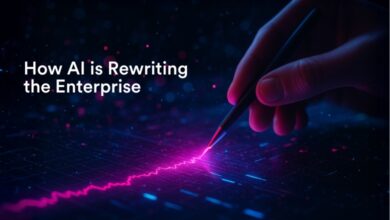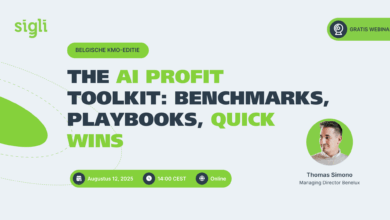
From threat detection to deepfake prevention, AI is transforming cybersecurity. How are companies adapting, and what new risks does AI introduce?
Did you know that organizations using AI and automation reduce the average time to identify and contain breaches by up to 74 days compared to those without it?
Can AI-Driven Security Save Your Business from Cyber Catastrophes?
Cyber threats have become faster, smarter, and more damaging than ever before. From ransomware attacks that paralyze operations to data breaches that compromise millions of records, the stakes are higher for every organization. As traditional defenses struggle to keep up, businesses are turning to artificial intelligence for a new level of protection. The AI security benefits are transforming how organizations detect, prevent, and respond to cyber threats—often in real-time.
The Growing Need for Smarter Cybersecurity
With the average cost of a data breach reaching into the millions, businesses can no longer afford slow detection and reactive response strategies. Cybercriminals use automation, social engineering, and ever-evolving tactics that easily bypass outdated security systems. AI addresses this gap by bringing intelligent, adaptive defense mechanisms that learn from attacks and evolve faster than human analysts ever could.
Top AI Security Benefits for Modern Businesses
- Real-Time Threat Detection
AI-powered systems continuously monitor your network, identifying anomalies, unusual behavior, and emerging threats instantly—often before damage occurs.
- Automated Response and Containment
When a threat is detected, AI can immediately trigger pre-configured response actions such as isolating endpoints, blocking IPs, or revoking access—limiting the attacker’s ability to spread
- Enhanced Accuracy and Fewer False Positives
Traditional systems often trigger overwhelming alerts, many of which are false alarms. AI filters out the noise, prioritizing real threats and helping security teams focus where it matters most.
- Continuous Learning and Improvement
Machine learning models evolve with each incident, improving detection rates and reducing reliance on static threat signatures or outdated databases.
- Predictive Threat Analysis
AI anticipates likely attack paths and vulnerabilities, allowing you to proactively strengthen defenses before a breach even occurs.
Use Cases Where AI Can Prevent Cyber Catastrophes
- Ransomware Prevention
AI can detect abnormal file encryption behavior and shut it down before an entire network is locked and held for ransom.
- Insider Threat Detection
By analyzing user behavior, AI identifies when an employee or compromised account acts outside of normal patterns—reducing risks from within.
- Phishing Email Identification
AI scans incoming emails for subtle phishing indicators, blocking harmful messages even when they appear to come from trusted sources.
- Endpoint Protection
From laptops to IoT devices, AI provides scalable monitoring to ensure all endpoints remain secure against exploitation.
- Cloud and Network Monitoring
AI secures dynamic cloud environments by analyzing data traffic, API behavior, and access requests for signs of attack or misuse.
Why Shift to AI-Powered Security?
Traditional security systems rely heavily on signature-based detection, manual investigations, and reactive defense mechanisms. These methods fall short when facing adaptive and large-scale attacks. AI brings dynamic threat detection, automated response, and contextual analysis that enhances your security posture. With AI, your infrastructure can detect, learn, and respond in real time—turning reactive defenses into proactive, intelligent protection.
Transitioning to the new AI-powered infrastructure model may seem complex, but with the right strategy, it can be a smooth transformative journey for an organization.
Steps to Transition to an AI-Powered Infrastructure
- Assess Your Current Security Landscape
Begin by evaluating your existing tools, workflows, and vulnerabilities. Identify areas that are slow, manual, or inconsistent in threat detection and response. This helps set realistic goals and define the scope of your AI integration.
- Define Clear Objectives
Determine what you want your AI-powered infrastructure to achieve. Common goals include faster detection, automated incident response, reduced alert fatigue, improved threat intelligence, and better scalability.
- Choose the Right AI Tools and Vendors
Look for solutions that integrate easily with your current environment. Consider platforms like BitLyft AIR® that offer real-time monitoring, behavioral analytics, and intelligent automation tailored to your business needs.
- Integrate with Existing Security Infrastructure
AI doesn’t replace all your existing tools—it enhances them. Integrate AI with your SIEM, firewalls, endpoint protection, and threat intelligence platforms to create a unified defense ecosystem.
- Automate High-Frequency Tasks
Use AI to handle repetitive processes like log analysis, alert triage, and threat scoring. This reduces manual workload and allows your team to focus on high-priority issues.
- Train Your Security Team
Empower your analysts with the skills to interpret AI-generated insights, fine-tune algorithms, and manage automated workflows. A knowledgeable team is critical to fully realizing the benefits of AI.
- Monitor, Optimize, and Scale
AI systems improve over time. Continuously monitor performance, adjust settings, and scale your AI capabilities as your network and threat landscape evolve.
Why AI Security Is a Business Necessity
AI is no longer a futuristic concept—it’s a business-critical tool. As attack vectors diversify and threat actors become more advanced, the benefits of AI-driven security are clear: faster response times, better visibility, and scalable protection. Investing in AI security isn’t just about technology—it’s about survival, compliance, and competitive advantage.





